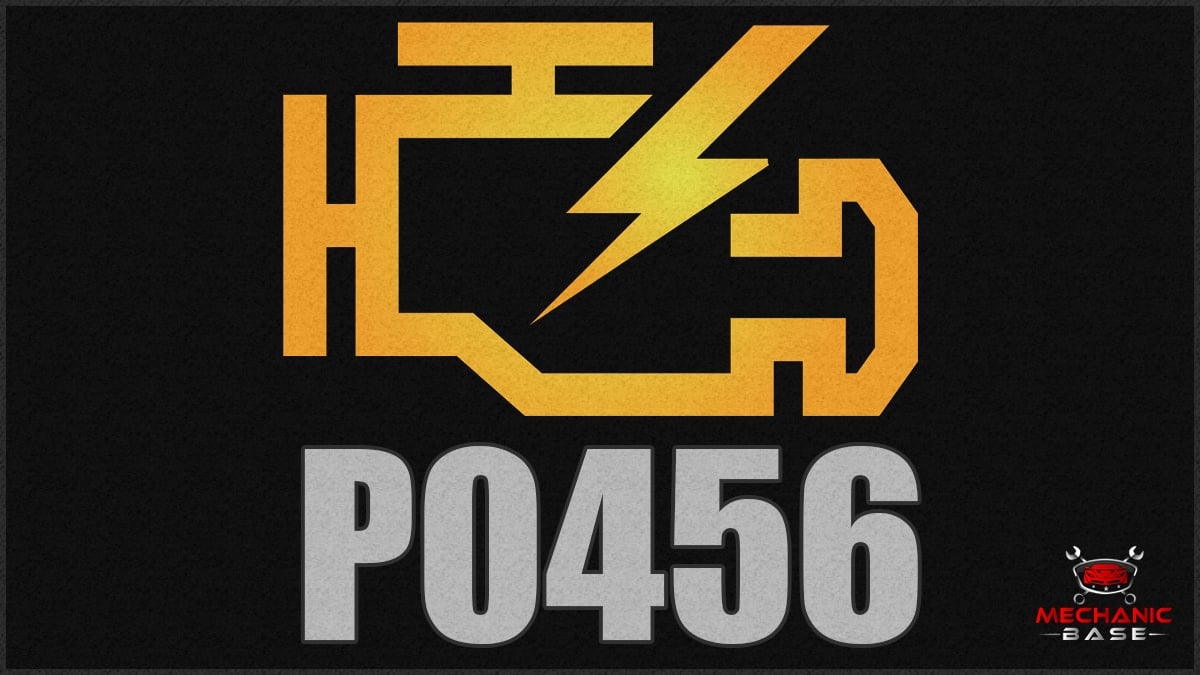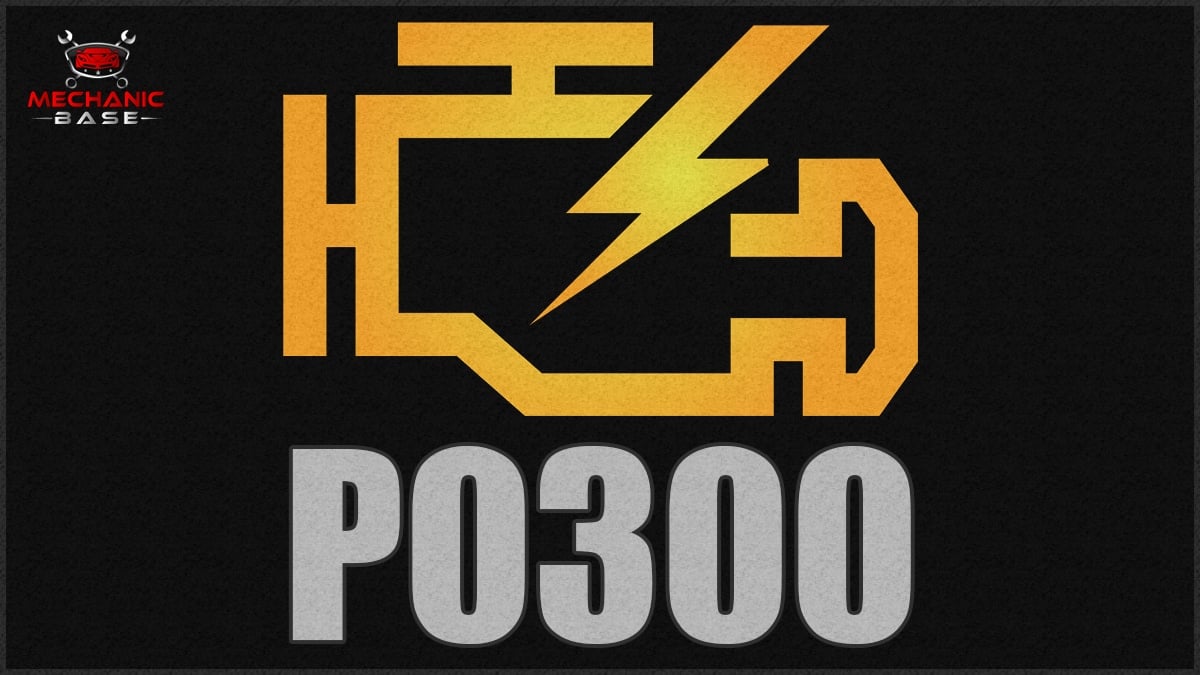When the Check Engine Light comes on without any other major symptoms, you may wonder what is going on. In some cases, you may see the P0456 code, which commonly occurs without any performance problems. What does the P0456 DTC mean, and what can be done about it?
In this guide, we cover the main reasons and the meaning of the P0456 trouble code. We also look at the possible symptoms, show you how to troubleshoot and discuss some of the repairs before answering your top questions.
Code P0456 Definition
P0456 – Evaporative Emissions System Small Leak Detected
What Does the P0456 Code Mean?
The P0456 is a generic code stating that the Engine Control Module (ECM) detected a small leak from the evaporative system. This leak was detected during a self-test. For the code to come on, the test must fail two times in a row before the Check Engine Light comes on.
The evaporative emissions system prevents fuel vapors from being released into the atmosphere by the vehicle. It is responsible for keeping the emissions as low as possible. These vapors are trapped in a charcoal canister and run through a filter. Then, the vehicle takes the remaining vapors and diverts them back into the engine through the intake vacuum, where they can be used for combustion.
The system has many hoses and areas where leaks can occur. That’s why the Engine Control Module (ECM) consistently monitors for leaks and sets the code when there’s a problem. While there are varying codes based on the amount of leak present, this particular trouble code indicates that the leak is extremely minimal, to a level that’s barely detectable.
What Are The Symptoms Of P0456?
In most cases, the P0456 trouble code doesn’t cause any noticeable issues. While you may see the Check Engine Light, any other symptoms are usually non-existent or hard to notice, giving people the false security that everything is fine.
Here are a few symptoms you may notice.
- Check Engine Light
- Reduced fuel economy
- Increase emissions
- Failed emissions test
- Faint fuel smell
What Are The Causes of P0456?

In most cases, the reason for the P0456 trouble code is as simple as a loose gas cap. Yet, there are some more complicated reasons this code can occur. Here are the most common.
- Damaged or loose gas cap
- Faulty EVAP hose
- Bad charcoal canister
- Defective canister vent control valve
- Fuel tank leak
How Serious is the P0456 Code?
Very Low – It’s likely that you won’t notice any performance issues while driving your car with the P0456 code. For this reason, it may not be a priority to fix it.
With the emissions system not working as it should, you are allowing more pollutants to enter the atmosphere than needed. Your car may also fail an emissions test during this time.
Even worse, while the Check Engine Light is on, you won’t know if something else fails that needs your attention. For that reason alone, it’s best to fix the problem as soon as you can.
How Do I Fix the P0456 Code?
The right fix depends on what you find during diagnostics. Here are a few possible P0456 fixes.
- Replace gas cap
- Replace broken EVAP hose
- Replace charcoal canister
- Replace the canister vent control valve
- Replace Fuel tank
Common P0456 Diagnosis Mistakes
The biggest mistake with the P0456 code is to skip right over the obvious, basic problems and jump into advanced diagnostics or replacements without reason. For many people, the gas cap simply needs to be tightened or replaced. For that reason, it doesn’t make sense to replace expensive parts before checking the gas cap.
It’s also helpful, once diagnostics have begun, to check for technical service bulletins. Some manufacturers have good insight into these problems.
How to Diagnose the P0456 Trouble Code?

As professional mechanics, we’ve worked on a lot of cars with the P0456 codes. Thankfully, it’s one of the easiest to figure out, making it possible for you to perform the diagnostics at home with the right equipment.
Scan the trouble codes to see if any more are present. Research all of the trouble codes in our DTC library to see if they are related to one another.
Use freeze frame data to see what the fault is.
- Inspect the gas cap. If it looks broken or damaged, replace it.
- Look for any obvious sign of a leak in the system. If you see a damaged hose or a faulty connection, replace it.
- Connect an EVAP smoke machine to the system. Look for leakage to occur around the fuel tank or hoses. Repair any leaks you discover.
- Disconnect the EVAP purge valve plug. With your compatible scanner, create an EVAP purge valve output test.
- Measure the connector with your multimeter to ensure it has 12 volts and a good ground connection.
- Send 12 volts and ground to the purge control valve to test it. Make sure it closes and opens at the right times.
- Reference the service manual for more detailed diagnostic tips.
Beyond this, you may need to get a mechanic involved. Dealing with the gas tank and other possibilities can be more complicated than you have the tools or expertise to fix.
How Much Does It Cost To Fix Code P0456?
Aside from replacing the gas cap, which everyone can do, we’ve supplied the top fixes with the cost of parts and labor. If you can perform the fixes on your own, you will spend less than what we estimated.
- Replace gas cap – $5 to $35
- Replace broken EVAP hose – $75 to $250
- Replace charcoal canister – $95 to $450
- Replace canister vent control valve – $125 to $350
- Replace Fuel tank – $450 to $3,000
A Mechanic’s Tips About The P0456 Code
Not all manufacturers use the P0456 code, so it isn’t as common as you may think. Yet, even when it does come on, it’s not normally indicative of a major problem. In most cases, you can simply tighten up the gas cap or replace it. Even if there’s a part that needs to be replaced, the fix isn’t typically expensive, with many fixes costing $200 or less, especially if you can do the job yourself.
There are several other codes relative to this one.
- P0440: Evaporative Emission Control System Malfunction
- P0441: Evaporative Emission Control System Incorrect Purge Flow
- P0442: EVAP System Leak Detected (Small Leak)
- P0445: Evaporative Emission Control System – Purge Control Valve Circuit Shorted
- P0457: Evaporative Emission Control System Leak Detected
Is code P0456 serious?
No, you probably won’t even notice any performance trouble with your vehicle during this time. All that’s happening is that more pollutants are entering the air from the vehicle, so it will fail an emissions test. You still want to fix it as soon as possible to get rid of the Check Engine Light.
Can I drive with a P0456 code?
Yes, you should have no trouble driving with the P0456 code. It doesn’t cause any performance issues because the fault is related to the emissions system. It’s still best to have it fixed as soon as possible so you don’t fail an emissions test, put more pollutants in the atmosphere and to turn off the Check Engine Light.
Can bad gas cause P0456?
Not normally. Bad gas can cause a lot of performance issues, but it shouldn’t lead to a small emissions leak. In most cases, the P0456 code occurs because the gas cap is loose or broken. If you just filled up with fuel and got this code, you want to make sure the cap is secured or replace it if it’s damaged.
What could cause a small EVAP leak?
In most cases, it’s as simple as replacing a defective gas cap. If the gas cap is in good working order, the problem could reside anywhere in the evaporative emissions control system. You may want to look over the hoses and check the valves with your code scanner. You can also run a leak test to find the damage.
Can a bad gas cap cause an EVAP leak?
Yes, it’s the most common cause of an EVAP leak. When the gas cap isn’t secured properly or there’s damage to it, fuel vapors can escape the system, causing the code to be triggered. If the gas cap is in good condition, there’s another part of the EVAP system that’s causing the leak.
Of all the codes to be alarmed about, the P0456 DTC isn’t one of them. This is one of the easiest to repair in most cases. It only takes a few minutes to secure or replace the gas cap, letting you get back on the road without the Check Engine Light.
However, you should never assume you know what’s wrong until you go through the diagnostic steps. It’s best to check the car out as soon as you can, to benefit the environment and to turn off the Check Engine Light so you get alerted when something more important goes wrong.
Categories: OBD Codes

















